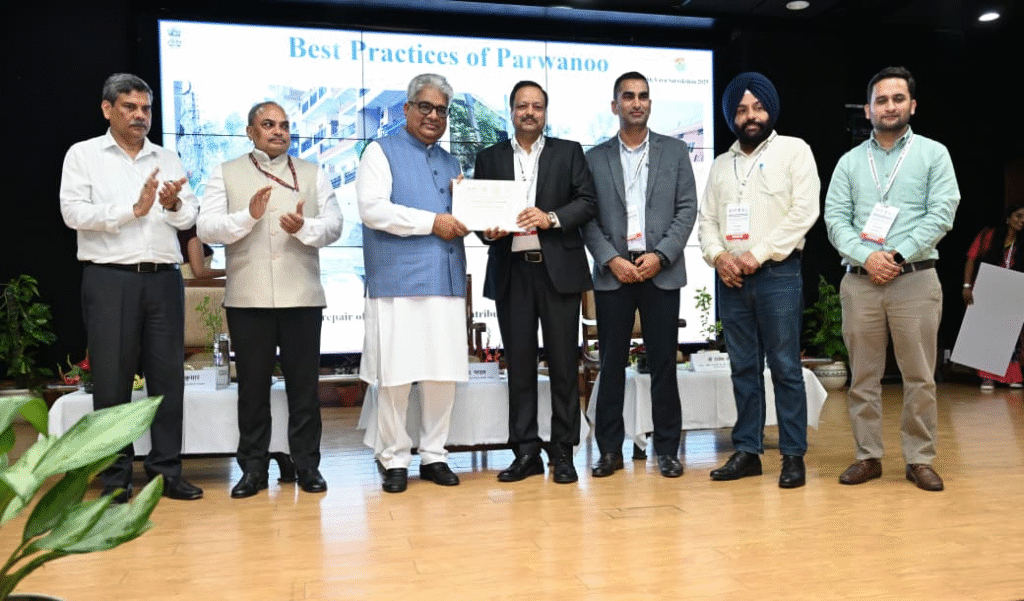Parwanoo Ranks Second in India for Clean Air Efforts: A Model for Small Cities
Parwanoo, a small industrial town in Himachal Pradesh, has earned national recognition for its exemplary efforts in tackling air pollution. In the Swachh Vayu Sarvekshan 2025, conducted under the National Clean Air Programme (NCAP), Parwanoo secured the second rank in the category of towns with less than 3 lakh population. Dewas in Madhya Pradesh took the first position, while Angul in Odisha secured the third.

The achievement highlights how smaller towns, often overshadowed by metropolitan cities, can lead by example in building sustainable and healthier living environments.
What is Swachh Vayu Sarvekshan?
The Swachh Vayu Sarvekshan is an annual assessment by the Ministry of Environment, Forest and Climate Change (MoEFCC) to evaluate the performance of 130 cities under NCAP. The survey promotes healthy competition among urban centers, encouraging them to implement clean air action plans targeting:
- Road dust management
- Waste disposal and legacy dump remediation
- Vehicular emissions control
- Industrial and C&D waste management
- Green space development
It serves as a multi-tiered evaluation mechanism, ensuring cities not only draft plans but also show tangible results.
Parwanoo’s Transformation: From Dusty Roads to Cleaner Air
Tackling Road Dust – The Biggest Culprit
A study by IIT Kanpur identified road dust as the primary contributor to air pollution in Parwanoo’s 8.5 sq. km area. In response, the civic body undertook an ambitious end-to-end pavement project across a 9 km stretch. Crumbling roads were replaced with paver blocks and interlocking tiles, and drainage systems were upgraded to prevent erosion.
Additionally, strict measures were introduced for the management of construction and demolition (C&D) waste, preventing open dumping that exacerbated particulate pollution.
A Remarkable Drop in PM10 Levels
According to Anil Kumar, Regional Officer of the State Pollution Control Board (SPCB) in Parwanoo, these measures brought down PM10 concentration by 40%, from 66 micrograms per cubic metre in 2017-18 to 39 micrograms in 2023-24. This achievement is particularly significant given the town’s industrial character.
Green Buffers and Public Awareness
Parwanoo also invested ₹11 lakh in developing a 0.27-acre green buffer zone. Tree plantations and greening drives were intensified, turning vacant spaces into natural dust filters. The administration also cracked down on open garbage dumping, which previously contributed to biomass burning and local emissions.
Himachal Pradesh’s Role and Recognition
For its innovation under NCAP, Himachal Pradesh received a ₹25 lakh cash award from MoEFCC. The state government has announced that this amount will be used to further strengthen clean air initiatives, building on Parwanoo’s example to scale solutions across other urban centers.
Why Parwanoo’s Achievement Matters
- Balancing Industry and Environment – As an industrial hub on the Chandigarh-Shimla highway, Parwanoo has long faced pollution pressures. Its success shows that industrial activity and clean air can co-exist with the right interventions.
- Healthier Communities – Clean air is directly linked to reducing respiratory illnesses, cardiovascular diseases, and overall healthcare burdens. Residents are already reporting a visible improvement in quality of life.
- Scalable Model for Small Cities – With limited resources, Parwanoo’s targeted strategies—road dust control, greening, and waste management—offer a replicable blueprint for other small towns in India.
Other Winners Across Categories
- Category 1 (Population above 10 lakh):
- Indore (Rank 1) with a perfect score of 200, noted for 16 lakh plantations and 120 electric buses.
- Jabalpur (Rank 2) for its 11 MW waste-to-energy plant.
- Agra and Surat (Rank 3) for legacy waste remediation and EV promotion.
- Category 2 (Population 3–10 lakh):
- Amravati (Rank 1) for 340 km of road pavements and converting 19 acres into dense forest.
- Jhansi & Moradabad (Rank 2) for urban greening and waste management.
- Alwar (Rank 3) for legacy dump site remediation.
- Category 3 (Population under 3 lakh):
- Dewas (Rank 1) for shifting industries to cleaner fuels.
- Parwanoo (Rank 2) for road dust management.
- Angul (Rank 3) for road improvement and public outreach.
Looking Ahead
The Swachh Vayu Sarvekshan Awards 2025 not only recognize cities but also send a clear message: air quality improvement is possible with science-backed planning, civic participation, and sustained action.
Parwanoo’s story proves that even small towns can make big strides when the focus is on sustainable cleanliness, green infrastructure, and strict pollution control. With consistent efforts, such models can help India move closer to its vision of breathable, healthy air for all.

